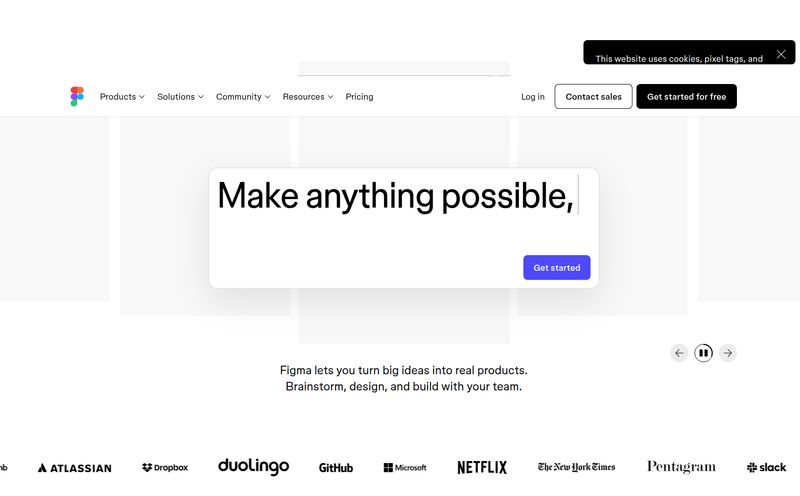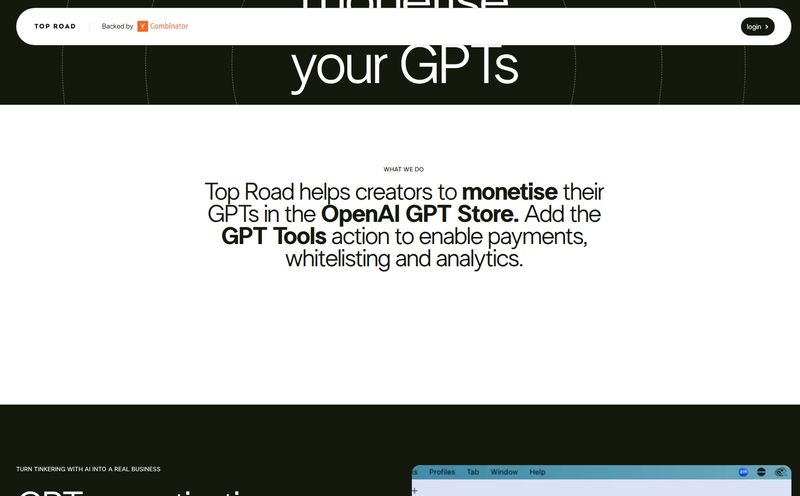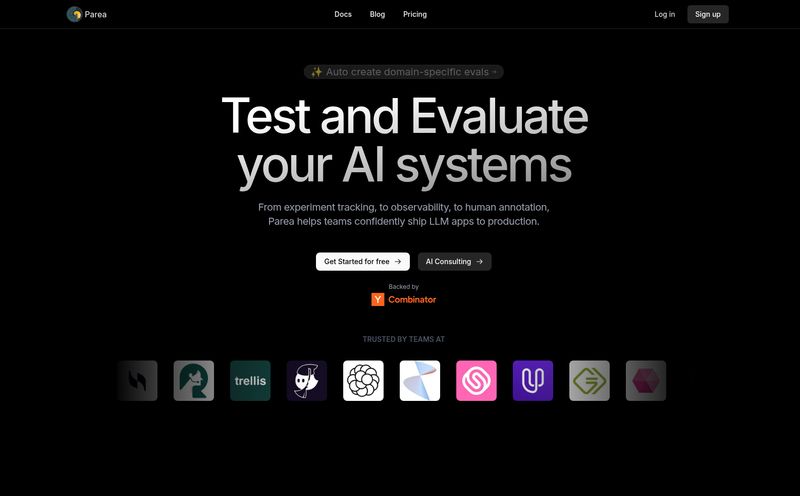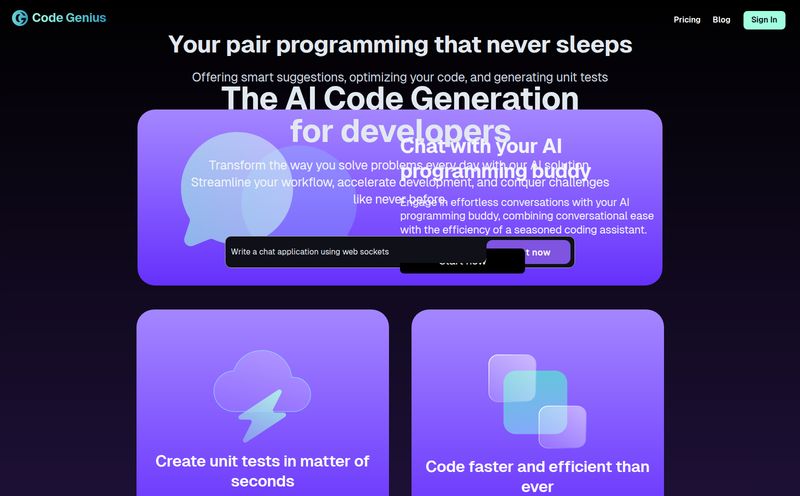We've all been there. You're deep in the trenches, wrestling with a complex serverless application, and you need to quickly check or modify something in a DynamoDB table. So you open the AWS Management Console. And you wait. And you click. And you paginate. And you try to remember the exact syntax for that one specific query you need. It's... an experience.
For years, working with DynamoDB felt like being handed the keys to a Formula 1 car but being forced to navigate it through a crowded parking garage. The power is immense, but the interface can feel clunky, slow, and just plain frustrating. I’ve lost more hours than I’d care to admit to wrestling with the web console, writing one-off scripts, or just sighing dramatically at my monitor. But recently, a tool called Dynobase has been making waves, and I have to say, my curiosity got the best of me.
Is it just another pretty face, or is it the DynamoDB productivity tool we've all been secretly wishing for? I decided to find out.
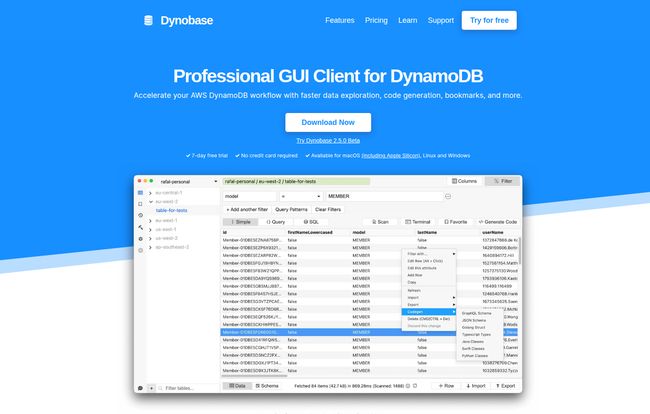
Visit Dynobase
So, What Exactly is Dynobase?
In a nutshell, Dynobase is a professional desktop GUI client for Amazon DynamoDB. Think of it like TablePlus or DataGrip, but built from the ground up specifically for the unique world of DynamoDB. It's not a web app; it's a native application for Mac, Windows, and Linux that connects directly to your AWS accounts. This means it's fast, responsive, and doesn't rely on a browser tab you might accidentally close (we've all done it).
But calling it just a “client” is selling it short. It’s more like a Swiss Army knife for your database. It’s designed to speed up common workflows, from exploring data and building queries to generating production-ready code. It’s for the engineer who respects DynamoDB's power but doesn't have the patience for its default user experience.
The Game-Changing Features I Actually Use
A long list of features is great for a landing page, but what's the stuff that actually makes a difference in your day-to-day work? After playing around with it for a while, a few things really stood out.
A Visual Query Builder That Doesn’t Get in the Way
This is the big one for me. While I'm comfortable with DynamoDB's query patterns, explaining them to a new team member or quickly building a complex filter can be a pain. Dynobase has this brilliant visual query builder that lets you construct scans and queries with dropdowns and simple inputs. You can see the results instantly.
And for those of us who grew up on SQL, it even supports PartiQL. You can write familiar SQL-like statements to query your NoSQL database. It feels a little like cheating, in the best way possible. It’s a fantastic bridge for teams transitioning from relational databases.
Code Generation That’s Actually Useful
I was skeptical about this one. Code-generation tools can often produce clunky, unidiomatic code. But Dynobase surprised me. You build your query or operation, and with a click, it generates clean, ready-to-use code snippets in JavaScript/TypeScript, Python, Golang and Rust. This is an incredible time-saver. No more digging through AWS SDK docs to remember parameter names. Just build, copy, paste, and get on with your life.
A User Experience That Respects Your Time
It's the little things that add up. The ability to switch between AWS profiles and regions without logging in and out constantly is a godsend. You can have multiple tabs open for different tables or queries, just like a web browser. And yes, it has a Dark Mode, because in 2024, do you even code if your tools don't have a dark mode?
It also fully supports local development with DynamoDB Local and LocalStack. This is huge for running tests and developing offline without worrying about your AWS bill. It just works.
My Honest Take: The Good and The Not-So-Good
No tool is perfect, right? Dynobase is fantastic, but let’s lay out the full picture. On the plus side, the intuitive UI is a massive leap from the AWS console. The productivity boost from features like code generation and the visual query builder is tangible—you feel it within the first hour. And its cross-platform nature means your whole team can use it, regardless of their OS preference.
On the other hand, the main drawback is that you need a paid license for full functionality. This isn't freeware. For hobbyists, this might be a deal-breaker. There can also be a slight learning curve if you're completely new to DynamoDB's concepts, but I’d argue that's a DynamoDB issue, not a Dynobase one. The tool actually makes learning easier. Finally, the solo licenses limit you to a few devices, which is something to keep in mind if you work across many machines.
Dynobase Pricing: Is It Worth The Investment?
Alright, let's talk money. Time is money for developers, so the real question is whether the price justifies the time saved. Here's a quick breakdown of their plans:
| Plan | Price | Best For |
|---|---|---|
| Solo - Yearly | $9 / month (billed annually) | Individual developers who prefer a subscription. |
| Solo - Lifetime | $199 one-time payment | Freelancers and solo devs who hate subscriptions. Honestly, this feels like the best deal. |
| Team - Yearly | $79 / month (billed annually for 10-20 licenses) | Small to medium-sized teams. |
| Enterprise | Custom Pricing | Large organizations needing unlimited licenses and support. |
In my opinion, the $199 lifetime deal is a no-brainer for any serious developer working with DynamoDB regularly. If you save just a few hours of work a month, the tool pays for itself very, very quickly. Think about your hourly rate; the math usually works out.
Who Should Get Dynobase?
This tool isn’t for everyone, but for a certain type of developer, it’s a game-changer. If you're a backend or serverless engineer who lives and breathes DynamoDB, you'll love it. If you're on a team that's adopted DynamoDB, it can standardize workflows and make onboarding new developers much smoother.
Even the experts seem to agree. People like Rick Houlihan, who practically invented single-table design, have endorsed it. When the people who know the database best are using a tool, it's probably a good sign.
"Dynobase should absolutely be your go to tool for DynamoDB data modeling."
- Rick Houlihan, Inventor of Single-Table Design
Frequently Asked Questions
How does Dynobase connect to my DynamoDB tables? Is it secure?
Dynobase uses the same official AWS SDKs that you're already using in your applications. It connects using your local AWS profiles stored in your home directory, just like the AWS CLI. It also supports MFA and AWS SSO. No data is sent to third-party servers; it's a direct connection between your machine and AWS.
Can I really use Dynobase to work offline?
Yes! It works perfectly with local DynamoDB distributions like DynamoDB Local and LocalStack (including the ones running in Docker). This is perfect for disconnected development and running tests without an internet connection.
How many computers can I use my license on?
A single subscription or purchase allows you to register on up to 3 devices. You can also deactivate old devices you're no longer using to free up a slot, which is pretty handy.
Is there a free trial?
Yep, they offer a 7-day free trial with no credit card required. You can download it and give it a proper test run to see if it fits your workflow before committing to anything.
What if I buy it and want to cancel later?
For subscriptions, you can cancel at any time, and you won't be billed again. You just log into your account and select Cancel. For the lifetime purchase, well, it's a one-time thing, so there's nothing to cancel!
My Final Verdict
After years of begrudgingly accepting the AWS console as a necessary evil, Dynobase feels like a breath of fresh air. It’s fast, thoughtfully designed, and packed with features that genuinely make a developer's life easier. It transforms the experience of working with DynamoDB from a chore into something almost… enjoyable.
Is it the best DynamoDB GUI client out there? In my experience, yes. If you're a professional who values your time and sanity, I'd strongly suggest giving the free trial a spin. You might just find it becomes an indispensable part of your toolkit, just like it's become for me.
References and Sources
- Dynobase Official Website
- Dynobase Pricing Information
- The DynamoDB Book by Alex DeBrie (A fantastic resource for learning DynamoDB)
